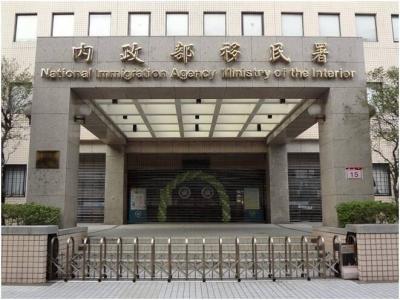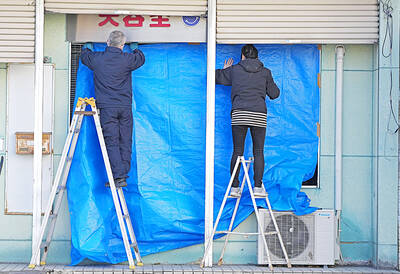The Ministry of Transportation and Communications would on July 1 begin promoting the second phase of “disease prevention tours,” Minister of Transportation and Communications Lin Chia-lung (林佳龍) said yesterday, after the Central Epidemic Command Center on Tuesday announced that it would lift many restrictions on June 7.
Details of the tours would be unveiled in a week, Lin said.
Lin made the announcement at a news conference for the launch of the first phase of the tours, which are expected to see the participation of about 300,000 tourism industry representatives.

Photo: Wang Yi-sung, Taipei Times
Minister of Health and Welfare Chen Shih-chung (陳時中), who heads the center, received a hero’s welcome at the news conference.
The first phase of the tours, which is to last one month, was designed to ensure that people begin adopting a “new disease prevention lifestyle” to prevent them from contracting the novel coronavirus, while helping travel agencies develop new domestic tour packages and the tourism industry to begin getting customers again, Lin said.
Feedback from industry representatives about the tours would also help enhance the quality of domestic tours, he said.
The center has approved disease prevention guidelines for domestic tours proposed by the ministry, which companies and schools could use as a reference when they organize trips for employees and graduates, he added.
Taiwan each year has about 17 million outbound tourists, who are now likely to remain in the nation and go on domestic tours due to border restrictions, Lin said, adding that this would provide a strong boost to the domestic tourism market, which serves about 11 million tourists per year.
It would also prepare the nation to receive more international tourists once its borders reopen for tourism, he said.
Asked for specifics about the second phase of the tours, which would be open to all tourists, Lin said that the ministry hopes to tie it in with a stimulus coupon program proposed by the Executive Yuan.
“Businesses could throw in additional bonuses if consumers use vouchers to pay for the tours or other services,” Lin said. “We welcome and even encourage such developments, as it would provide value-added tours to tourists.”
The ministry has not canceled a plan to issue NT$500 (US$16.65) travel vouchers, which are now included in an expanded subsidy program for domestic tours that is to be implemented on July 1, he said.
The budget allocated for the program has increased from NT$2 billion to NT$3.9 billion, he added.
The second phase of the tours is expected to last about four months, Lin said, adding that as it is difficult to predict how the COVID-19 pandemic would be contained in other nations, the Cabinet has generally agreed that the time frame might be extended.
Chen said that he endorses the government’s promotion of domestic tourism, because Taiwan is a safe place to travel.
Although the center plans to start relaxing disease prevention measures on June 7, Chen said that people need to adopt a new lifestyle that prevents them from contracting COVID-19, which includes wearing masks, observing social distancing guidelines, washing their hands as frequently as possible and making sure people can be contacted if new infections are confirmed.
By cutting off people-to-people infection chains, investigating confirmed infections and treating those infected, Taiwan can mitigate the health risks caused by isolated confirmed cases after the nation’s borders are reopened, he said.

A small number of Taiwanese this year lost their citizenship rights after traveling in China and obtaining a one-time Chinese passport to cross the border into Russia, a source said today. The people signed up through Chinese travel agencies for tours of neighboring Russia with companies claiming they could obtain Russian visas and fast-track border clearance, the source said on condition of anonymity. The travelers were actually issued one-time-use Chinese passports, they said. Taiwanese are prohibited from holding a Chinese passport or household registration. If found to have a Chinese ID, they may lose their resident status under Article 9-1

Taiwanese were praised for their composure after a video filmed by Taiwanese tourists capturing the moment a magnitude 7.5 earthquake struck Japan’s Aomori Prefecture went viral on social media. The video shows a hotel room shaking violently amid Monday’s quake, with objects falling to the ground. Two Taiwanese began filming with their mobile phones, while two others held the sides of a TV to prevent it from falling. When the shaking stopped, the pair calmly took down the TV and laid it flat on a tatami mat, the video shows. The video also captured the group talking about the safety of their companions bathing

PROBLEMATIC APP: Citing more than 1,000 fraud cases, the government is taking the app down for a year, but opposition voices are calling it censorship Chinese Nationalist Party (KMT) Chairwoman Cheng Li-wun (鄭麗文) yesterday decried a government plan to suspend access to Chinese social media platform Xiaohongshu (小紅書) for one year as censorship, while the Presidential Office backed the plan. The Ministry of the Interior on Thursday cited security risks and accusations that the Instagram-like app, known as Rednote in English, had figured in more than 1,700 fraud cases since last year. The company, which has about 3 million users in Taiwan, has not yet responded to requests for comment. “Many people online are already asking ‘How to climb over the firewall to access Xiaohongshu,’” Cheng posted on

A classified Pentagon-produced, multiyear assessment — the Overmatch brief — highlighted unreported Chinese capabilities to destroy US military assets and identified US supply chain choke points, painting a disturbing picture of waning US military might, a New York Times editorial published on Monday said. US Secretary of Defense Pete Hegseth’s comments in November last year that “we lose every time” in Pentagon-conducted war games pitting the US against China further highlighted the uncertainty about the US’ capability to intervene in the event of a Chinese invasion of Taiwan. “It shows the Pentagon’s overreliance on expensive, vulnerable weapons as adversaries field cheap, technologically